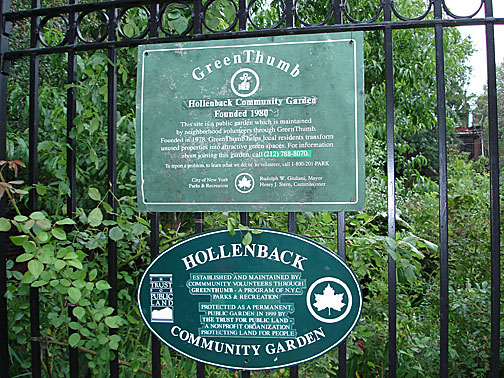Nowtopia - Urban Gardeners
“Gardening is not the revolution, nor does gardening turn every gardener into a cultural radical… Gardening…produces good food and other benefits outside the complex of exchange… Moreover, it is an art form, an area of creativity as rich and promising as any symbolic activity, and one which can roughly but easily transpire beyond the realm of representation and mediation. It can function as an important part of “everyday life” in the radical sense of that term.”
—Peter Lamborn Wilson
“…the urban community garden, with its potential for feeding households and generating local cottage industry, with its power to restore a measure of community life, and with its capacity to recycle organic wastes, is thriving throughout the world: in Karachi, La Paz, Hong Kong, Nairobi, Dakar, Dar es Salaam, and Bangkok, as well as in Philadelphia, Detroit, Newark, and Los Angeles. Globally, about two hundred million urban dwellers are urban farmers. Most of these farmers are women, and they provide food and income for about seven hundred million people. Is it so surprising that urban women of color would use community gardens to repair the fabric of our inner cities? Neither nostalgic for a pastoral past, nor Luddite in its sensibility, the inner-city community garden movement restores a nature banished from the industrial city, and offers a degree of self-sufficiency and neighborhood security, achievements that elude the master plans of urban planning experts.”
—H. Patricia Hynes
Coaxing food from land is a timeless activity. To tend a patch of land, putting hands in soil, planting, harvesting food and flowers, is to join an enduring human tradition and to carry forward common skills about how to live on Earth that precedes everything we label “the economy.”
On hands and knees, digging in the dirt, a gardener leaves the frenzied pace of modern life behind. A different rhythm of sun, soil, water, and growth asserts itself, a seasonal pace indifferent to the frantic demands of the clock. Our society is gripped by an obsessive awareness of “now” that reinforces a stunning amnesia for what happened last week, last year, or in previous periods of history (let alone in other parts of the world). Gardening changes that relationship to time by slowing down the gardener, making her pay attention to natural cycles that only make sense in the full unfolding of seasons and years. In a shared garden, time opens up for conversation, debate, and a wider view than that provided by the univocal, self-referential spectacle promoted by the mass media.
…
The painstaking years-long efforts to bring community gardens to life have depended on countless hours of hard work. In a harshly capitalist society work is exchanged for money, and if it happens otherwise, it is dismissed as a hobby. Certainly many gardeners consider their work a hobby, but the urban transformation wrought over the past generation of community gardening cannot be explained as simply a lot of hobbyists. Instead, like the initiatives in other chapters, gardeners are working to refashion their lives in tune with their own visions, know-how, and multidimensionality. Their motivations are varied, but remuneration is seldom first among them. As we’ve seen already, building community is a big goal, embodying a range of needs for friendship, camaraderie, mutual aid, and ecological intervention. Later we’ll examine how a new relationship to food drives a great many garden projects too. But at the root, it is a different relationship to work that inspires and sustains many community gardeners.
Organic Industry Structure Map
American Community Gardening Association
Quesada Gardens Initiative (San Francisco)
South Central Farmers (Los Angeles)
Harvestr (open source database of free and low cost food sources)
Neighborhood Gardens Association (Philadelphia)
More Gardens (NYC)


